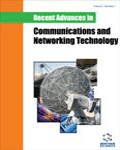Abstract
With the increase in mobile devices there is also an increase in demand for IP mobility across networks. Although not created for that purpose, the LISP protocol offers a clean solution for mobility, via an end-to-end map/encap scheme. The solution offered by LISP allows a mobile device to keep its IP address even when changing networks.
LISP’s mobility method, however, breaks when the mobile device does not have access to a publicly routable IP address, which is to be expected in today’s NAT dominated world. The LISP proposed NAT traversal solution suffers from suboptimal routing and unnecessary provider dependance. This has two major effects: increased latency, which is especially worrisome on short lived connections, and worse performance due to extended reconfiguration time during mobility events.
In this paper we propose an alternative NAT traversal mechanism for LISP, by adding LISP functionality to the NAT device. The evaluations performed, by simulation and over a proof of concept prototype, show that both hindrances may be suppressed. Additionally, our experience shows that, at least for a mobile device, the LISP control plane is uselessly overburdening.
Keywords: LISP – locator identifier separation protocol, LISP mobile node, Locator / identifier split, Map-Encap, Mobile IP, NAT- network address translation, NAT traversal routing.
Graphical Abstract
 7
7











